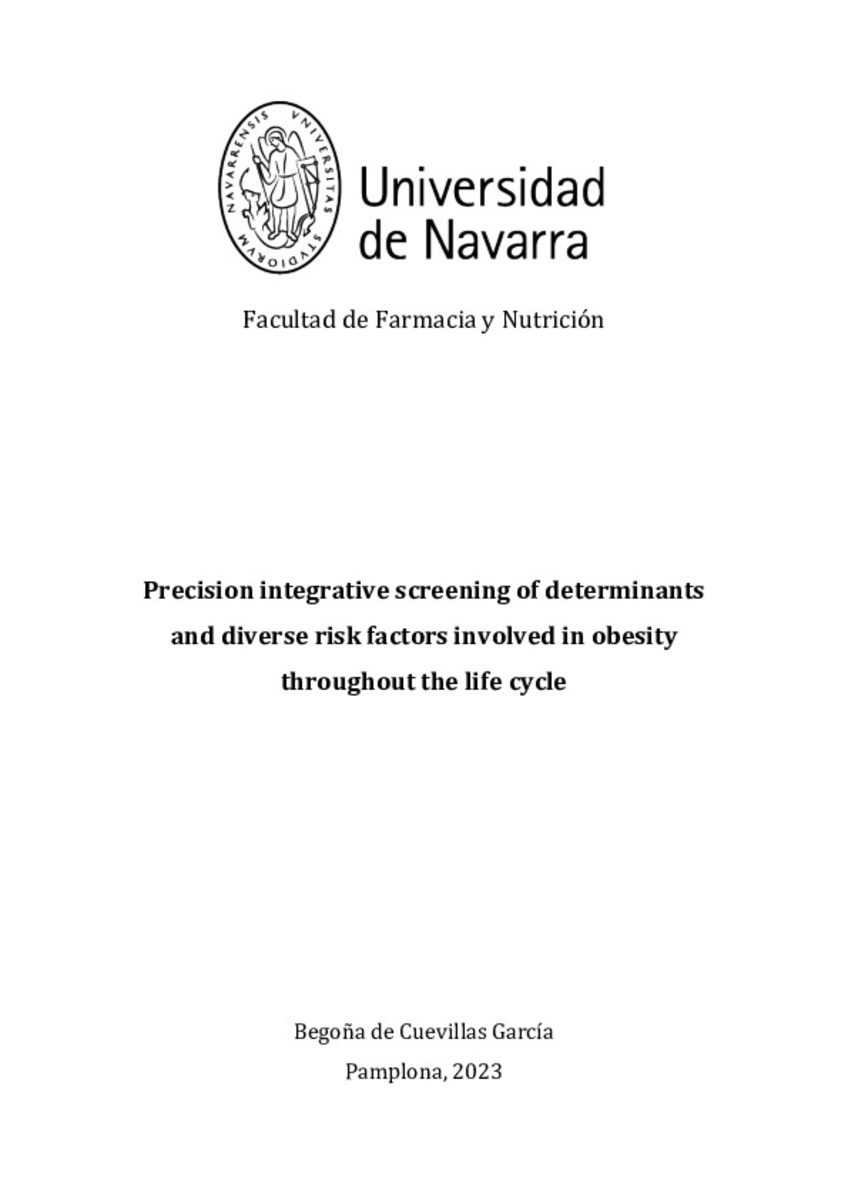Precision integrative screening of determinants and diverse risk factors involved in obesity throughout the life cycle
Keywords:
Materias Investigacion::Ciencias de la Salud::Nutrición y dietética
Obesity
Excess adiposity
Determinants
Risk factors
Publisher:
Universidad de Navarra
Citation:
CUEVILLAS, María Bergoña de. "Precision integrative screening of determinants and diverse risk factors involved in obesity throughout the life cycle". Navas, S. y Martínez, J.A. (dirs.). Tesis doctoral. Universidad de Navarra, Pamplona, 2023.
Statistics and impact
0 citas en

0 citas en

Items in Dadun are protected by copyright, with all rights reserved, unless otherwise indicated.







